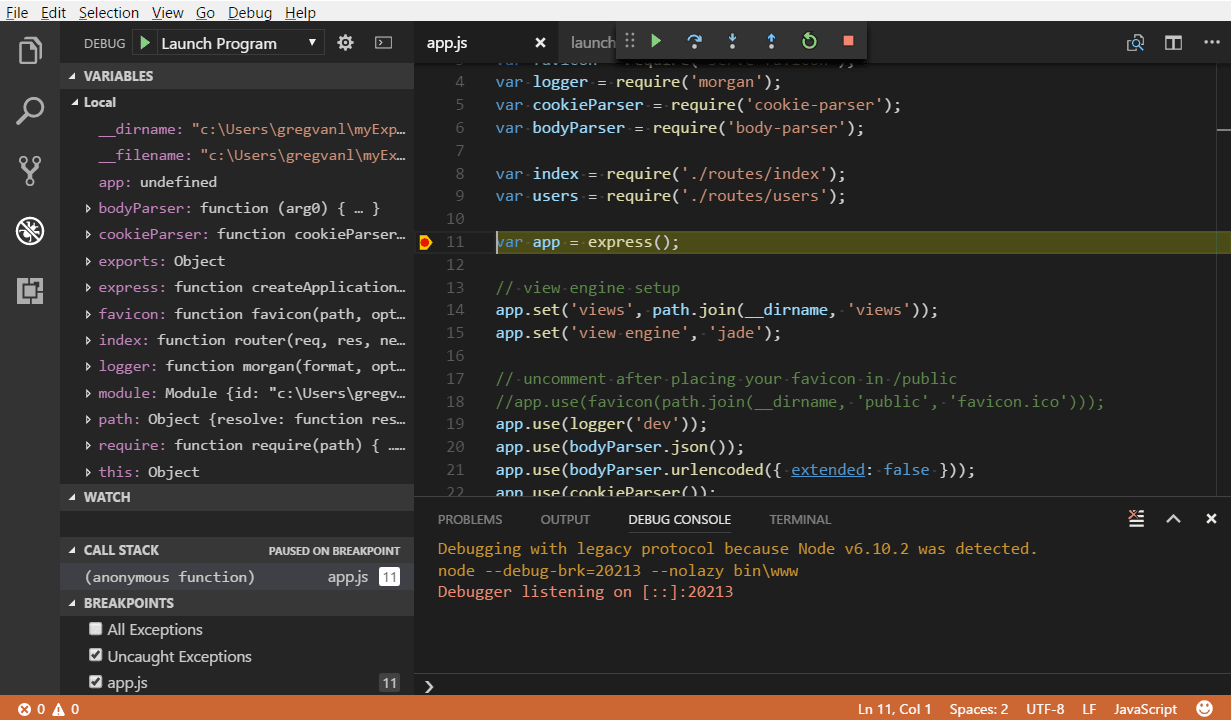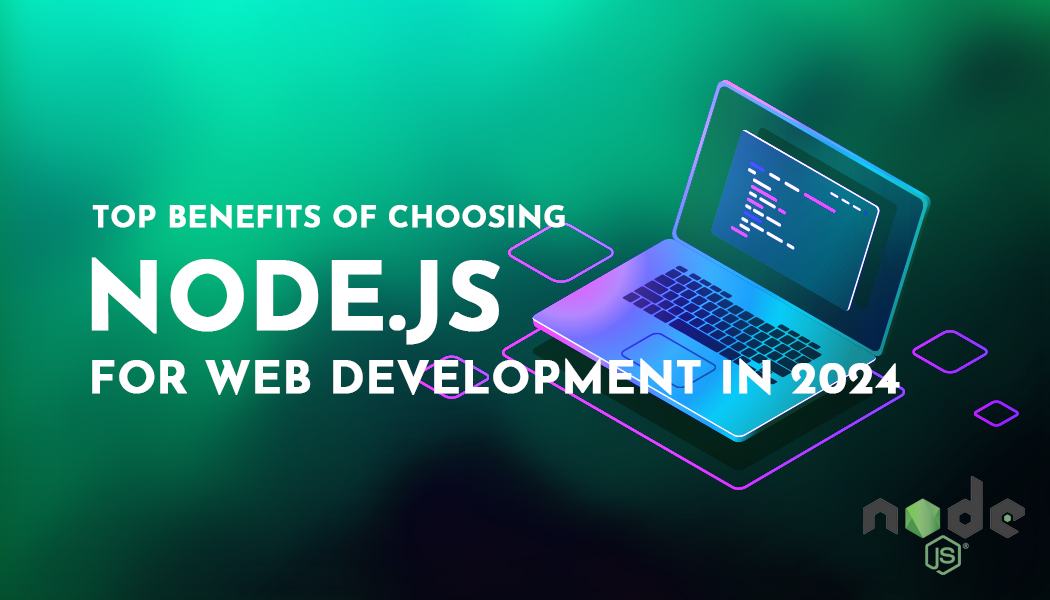Top Benefits of Choosing Node.js for Web Development in 2024
Node.js group is leading the digital world. With its continuous changes and in demand for web applications with performance and scalability to match user needs in real time, developers have found node.js to be so advantageous you can choose to build web applications cookies and all 'high-end'. This open-source runtime environment for JavaScript boasts great performance and ease of use-and best of all, it’s free. Real-Time Apps: Node.js is perfect for building applications such as chat platforms, collaboration tools and stock tickers that need to operate in real-time. It can handle data just as soon as it reaches the server due to its event-driven architecture and non-blocking I/O model which gives efficiency gains across many connections (e.g. Chat application).

Faster Development: Node.js is written in JavaScript which is a well-known language for many web developers, and so speeds development time. Furthermore, the rich set of modules and libraries currently available for Node.js makes the development process much less complex; this enables programmers to focus on their core functionality rather than reinventing the wheel each time it turns.
Scalability: Node.js applications are highly scalable and can easily handle increased traffic levels or new user loads. This is because they are designed to spread the load-to give one example if more servers come online through which to serve those friends on Facebook.
Cost-Effective: Node.js is open-source and free on day one, which makes it a cost-effective solution for any size of business. Plus, the short development cycle and reduced maintenance requirements also mean lower costs in the long run. As you plan the next web development project, why not take a look at Nodejs Development Services? The unique combination of features and advantages it brings to today's digital world, which is fast-moving, make it the perfect solution.
It is typical to see Node.js at the start of operation benefits such as the real-time capability, quick iteration’s ability, attachment of new applications high scalability and low cost. they are common properties. However, there are some aspects which are only now starting to be welcomed;
Micro Service Based Architecture: Have provided that a platform for building micro services which can be shared upon one server. This moves away from big monoliths to small boats - that is, breaking down applications into many smaller independent and loosely coupled services or component parts. With this method, there are several advantages:
Higher Probability of Successful Operation: Each single service is operated independently on its own server, exclusion of sites in trouble so as not to affect neighboring applications.
Easier Maintenance: Smaller services are more easily understood, serviced, and updated than is a huge monolithic application.
Stronger scalability

A service is scale up to meet the specific needs of its function without incurring much overhead.
Meanwhile, Event-driven, non-blocking characteristics characteristic of Node.js development company gives it the ability to construct highly efficient communication between micro services forms which can support a large traffic load.
Internet of Things (IoT) Development: Node.js is gaining prominence as the primary language for IOT applications, since practically all devices are connected together today.
Light and Flexible: Node.js is light on resources and resource requirements. It is perfect for the resource-limited devices typically used in IOT environments.
Real Time Data Analysis: With the event-driven architecture in Node.js the procedure can now accept real-time data streams from machines. Real-time monitoring as well as analysis and forecasting become possible.
Fast And Powerful Prototyping: With Node.js as a development platform rapid development cycle is now possible, so that it shortens the period of composing prototypal software for IOT applications. This in turn releases more time for innovative thinking or just general development of all types.
This is machine learning integration: Node.js saw the potential for seamless integration and in a fast-moving machine learning field there appeared many options available.
JavaScript Libraries: As a result, because for many JavaScript libraries now there's some machine learning, developers under Node.js can conveniently add ML to their applications.
Desktop Applications: Because of the Electron and similar frameworks Node.js can produce applications for desktops on platforms like Linux, Mac OS or Windows--using familiar web interfaces such as JavaScript, HTML and CSS.
Serverless Functions: Here are some of the ways Node.js is taking a role in serverless function development, as this particular cloud-based execution model doesn't require developers to take care about server infrastructure at all.
These are just a few examples demonstrating how Node.js may start to see usage outside of its ordinary realm. Double Emphasize what is New in Programming certain trends emerge with structure while others crumble away. Node.js not gives way when acting as platform for emerging technologies which take us closer and closer to living the life where technology serves one’s needs rather than just one more consumer product.
Node.js: A Catalyst for Innovation - Advanced Uses and Future Trends
In the previous sections, we examined Node.js's main strengths, then both how it could begin to develop new capabilities now that work has started on extending its ability in these two directions. Now we will look more deeply into innovation possible with Node.js and where such popular web technologies could take us tomorrow:
Single-Page Applications (SPAs): SPAs are becoming progressively popular, providing users with a seamless, receptive experience. Node.js, being a component absolutely essential for their production.
API Development: Because Node.js is an extremely strong backend server for SPAs then it is capable of real data updates on APIs. Working with these APIs communication between the frontend (user interface) of an SPA and its backend (server-side logic) becomes faster--in this way the application functions quietly and smoothly.
By way of server-side rendering (SSR) to generate your initial HTML content on the server, even before sending it off, a slow reply time can be fixed for single page applications. The findings of SPAs are made eight times more conspicuous than on traditional search engines.
Go three feet deep in the Node.js API
Framework Support: Popular Node.js frameworks can help us slowly establish the system (SPA) in a better and more maintainable way. Both the structure of a building block used by Express’s is comprehensive. It provides powerful tools for serving up programs created with it. They are for example, eight components; each with its own characteristics
Real-time Collaboration Tools: Thanks to its event-driven architecture in addition non-blocking I/O model, Node.js is faultless intended for constructing real-time collaboration tools. As a result, these tools can make team collaboration smoother and more efficient at higher levels of productivity by allowing users to communicate and work together seamlessly in real time.
Document Editing: Real-time document-editing platforms such as Google Docs and collaborative writing-tools use Node.js technology which permits multiple editors to write at the same time upon a text without getting in each another's way. This way difficulty is lessened--while productivity increases. Unnecessary errors are removed.
Chat Applications: Chat applications like Slack and Discord have been built with Node.js. It enables real-time messaging to update--so instant communication and collaboration within communities or teams.
Whiteboard Applications: Many free node.js interactive whiteboards for brainstorming and online meetings use Node.js to synchronize visual elements, textual content; along with real-world data in real-time joint problem solving and ideation.
Node.js is efficient in handling large volume data streams and as a result it's suitable to develop applications for streaming. This makes it good for: Live Video and Audio Stream
Platforms like Twitch and YouTube use Node.js to process video and audio content in real-time, ensuring it works smoothly for the users. Data Streaming
For applications that require visualizing, analyzing and processing real-time data, Node.js can really help -- whether it's tickers or financial dashboards. These would be impossible without a way to deal with continuous data streams from servers and then dynamically update the results almost instantly at the same timeout Data Stream
As stated before, Node.js is ideal for working with the data feeds that come out of IoT devices. This capacity can be put to use to create applications that can monitor and analyze sensor or device data in Realtime empowered with near instant decision on each occasion it is needed-commerce & Content Management Systems (CMS)
Node.js is beginning to be used in building e-commerce platforms and CMS because it offers scalability at fastest performance-commerce Platforms
Node.js can handle high traffic and dynamic content without losing a beat. This makes it the perfect technology for building e-commerce sites where users want slow-to-no load times. Content Management Systems
CMS platforms like Drupal and WordPress are also starting to use Node.js for particular areas such as developing unique plugins or managing dynamic content updated in near real-time--this greatly enhances the versatility and competence of content creators in general. Paths for the Future
As Node.js advances, several new trends are showing some promise for the future: Integration into the Emerging Technologies
Integration with technologies such as blockchain, AI, and virtual / augmented reality provide new possibilities of applications and a wider range for Node.js users.
PAY ATTENTION TO USER EXPERIENCE
With upgrades coming at an ever-faster pace to frameworks and tools, Node.js will be an even easier choice for more people, especially those who have little experience.
MORE SECURITY IMPROVEMENTS
In order to stop the growing number of Node.js apps from becoming widely used attack machines, security improvements will need to be made continuously and in depth. Fixing bugs will become increasingly important, as will scrutinizing the possibilities for potential vulnerabilities.
Exploring future trends such as these more advanced Node.js cases in order to shape web development come next Routes prioritized beyond wandering dreary rounds transform our understanding You are not alone in your affinity for something so powerful and has such an extraordinary future but there are more than just one of these, all looking remarkably alike: What about another one here!
FAQS
What are some popular Node.js frameworks?
Express.js: A popular web framework for creating web applications and APIs. It does not require a server component like the traditional conceited viewpoint of a web app. Nests: Based on Angular, it's a way of making application in the server. It's supposed to be more attractive and maintainable beyond the edge there too. Next topic:
What are the most frequently questions that people ask?
Node.js may be a good choice for those programmers who have a basic knowledge of JavaScript given that its syntax (back then from C) is very similar to that of old times. Furthermore, there's plenty material online in both books and on the web with which one can learn about it.
What does Nodejs mean?
Yet this may mean another period in learning for you in order to understand the concept of asynchronous programming. Node.js on the other hand also is different from existing server languages like PHP or Python in some respects. More information on Node.js can be found at:
the Node.js documentation portal many places online offer tutorials or other means for learning about development on and for Node.js There are also A large number of books (as well as forums) where you can expect help and resources if you happen to be learning how to use Node.js.




